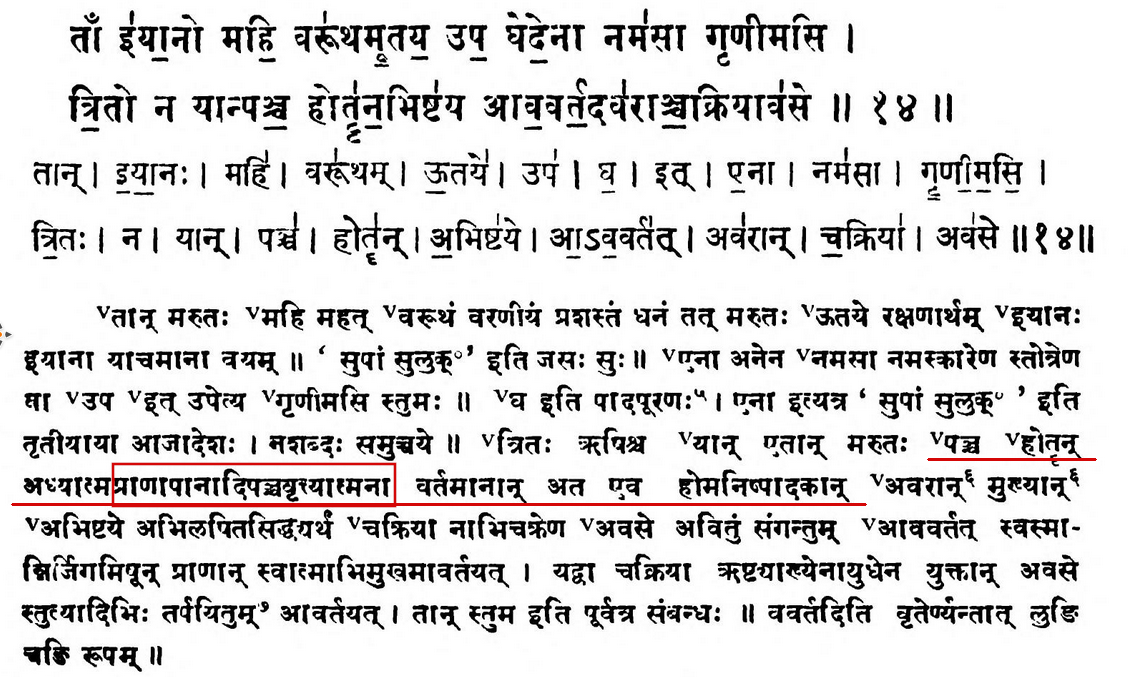Rig Veda II.34.14, dedicated to Maruts, narrates briefly about 5 terrestrial rishies
तानियानो महि वरूथमूतय उप घेदेना नमसा गर्णीमसि | तरितो न यान पञ्च होतॄनभिष्टय आववर्तदवराञ्चक्रियावसे ||
tāniyāno mahi varūthamūtaya upa ghedenā namasā ghṛṇīmasi | trito na yān pañca hotṝnabhiṣṭaya āvavartadavarāñcakriyāvase ||
Translation of H.H. Wilson (P.179) is as follows:
Imploring them for ample wealth. and (having recourse to him) for protection. we glorify them with this praise: like the five Chief Priests whom TRITA detained for the (performance of) the sacrifice. and to protect it with their weapons.
This mantra is referring to
5 Chief Priests, who TRITA detained
for protection of his sacrifice with their weapons
TRITA was used in other mantras to indicate a MAHARSHI
My questions are:
Who were the 5 Chief Priests, who protected the sacrifice of TRITA?
Was this protection of a sacrifice allegorical and/or a forerunner to protection of Yagna, performed by Sage Viswamitra by Sri Rama and Lakshmana, with their weapons?

